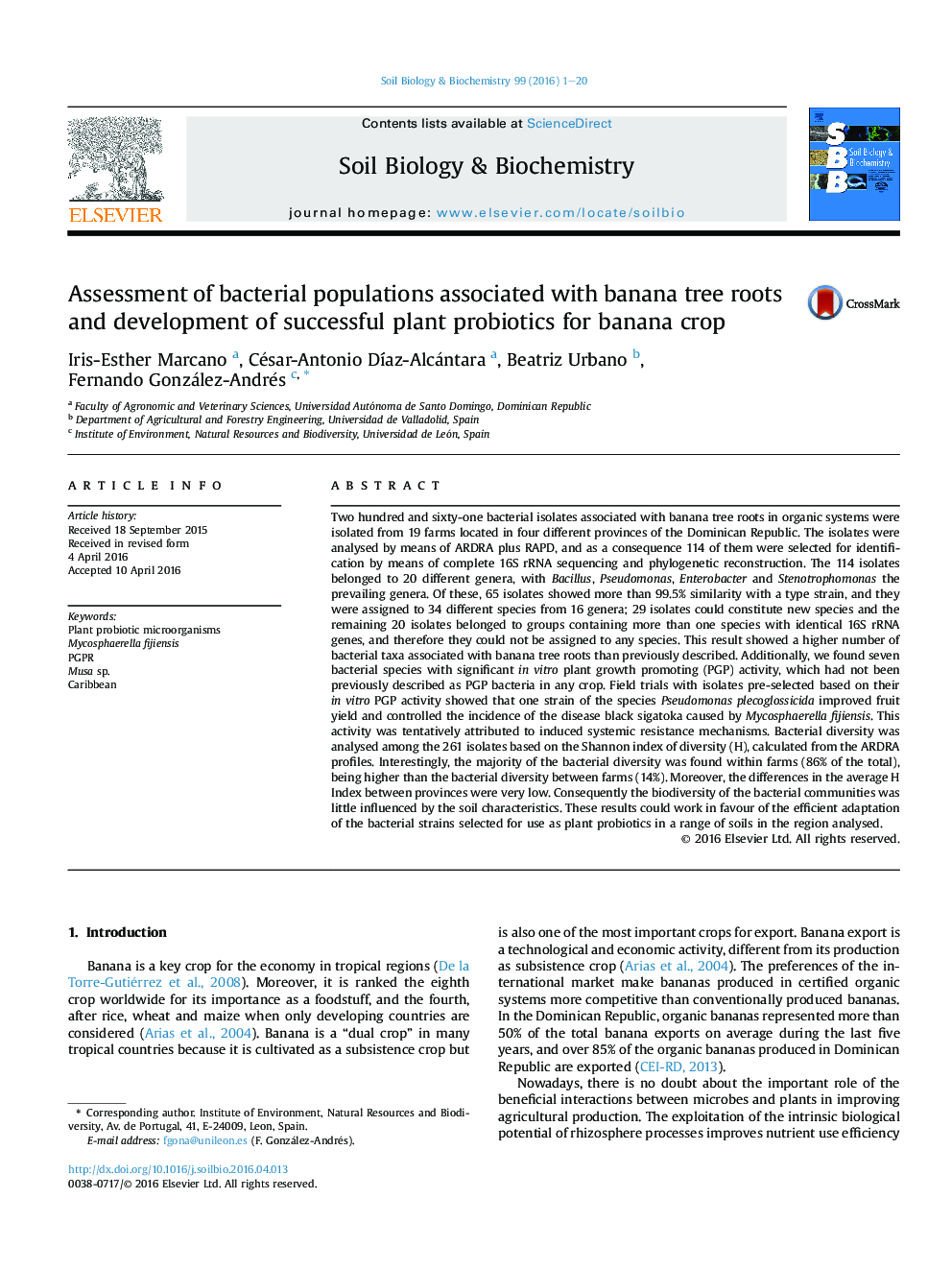| Article ID | Journal | Published Year | Pages | File Type |
|---|---|---|---|---|
| 2024292 | Soil Biology and Biochemistry | 2016 | 20 Pages |
Abstract
Two hundred and sixty-one bacterial isolates associated with banana tree roots in organic systems were isolated from 19 farms located in four different provinces of the Dominican Republic. The isolates were analysed by means of ARDRA plus RAPD, and as a consequence 114 of them were selected for identification by means of complete 16S rRNA sequencing and phylogenetic reconstruction. The 114 isolates belonged to 20 different genera, with Bacillus, Pseudomonas, Enterobacter and Stenotrophomonas the prevailing genera. Of these, 65 isolates showed more than 99.5% similarity with a type strain, and they were assigned to 34 different species from 16 genera; 29 isolates could constitute new species and the remaining 20 isolates belonged to groups containing more than one species with identical 16S rRNA genes, and therefore they could not be assigned to any species. This result showed a higher number of bacterial taxa associated with banana tree roots than previously described. Additionally, we found seven bacterial species with significant in vitro plant growth promoting (PGP) activity, which had not been previously described as PGP bacteria in any crop. Field trials with isolates pre-selected based on their in vitro PGP activity showed that one strain of the species Pseudomonas plecoglossicida improved fruit yield and controlled the incidence of the disease black sigatoka caused by Mycosphaerella fijiensis. This activity was tentatively attributed to induced systemic resistance mechanisms. Bacterial diversity was analysed among the 261 isolates based on the Shannon index of diversity (H), calculated from the ARDRA profiles. Interestingly, the majority of the bacterial diversity was found within farms (86% of the total), being higher than the bacterial diversity between farms (14%). Moreover, the differences in the average H Index between provinces were very low. Consequently the biodiversity of the bacterial communities was little influenced by the soil characteristics. These results could work in favour of the efficient adaptation of the bacterial strains selected for use as plant probiotics in a range of soils in the region analysed.
Related Topics
Life Sciences
Agricultural and Biological Sciences
Soil Science
Authors
Iris-Esther Marcano, César-Antonio DÃaz-Alcántara, Beatriz Urbano, Fernando González-Andrés,
